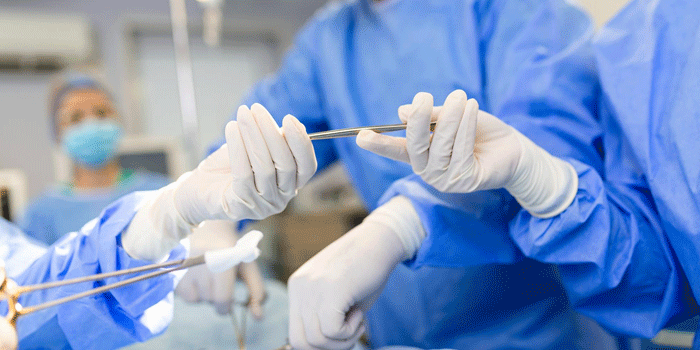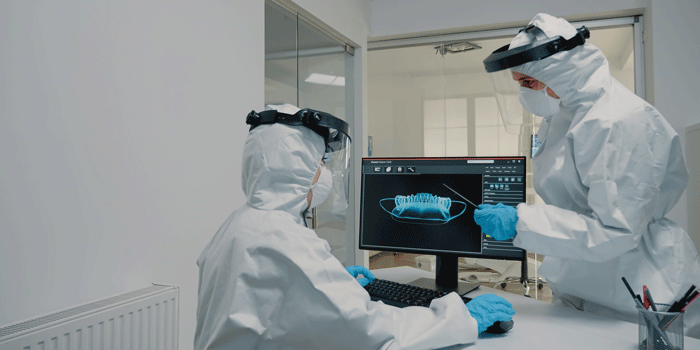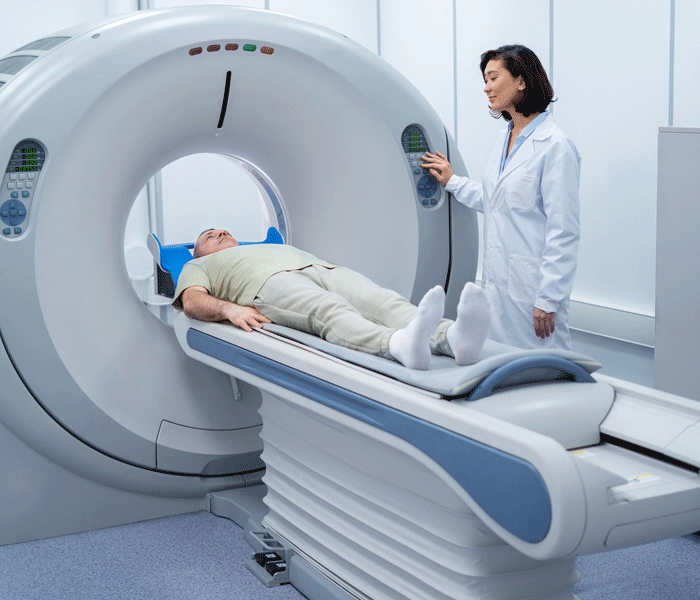Prostate Cancer
- Home
- Prostate Cancer

Overview
Prostate cancer is a cancer which occurs in the prostate gland situated below urinary bladder in males. Prostate cancers are usually slow growing and are highly curable or controllable, but few types are very aggressive and spread fast.
Symptoms
- Frequent urination
- Weak urine flow
- Pain or burning during urination
- Loss of bladder control
- Painful ejaculation
- Blood in semen
- Low back ache as pain in hip/ chest.
Majority of these symptoms are also present in benign condition like benign prostatic enlargement (BPH) or Prostatitis (inflammation of prostate).
Causes:
- Smoking
- Prostatitis
- Obesity
- Age – increasing age increase risk of cancer
- Family history of prostate cancer
- Genetic causes like lynch syndrome or Breast cancer syndrome (BRCA1 and BRCA2)
Diagnosis:
Men above the age of 55 years should be screened for prostate cancer .Patients who present with symptoms are evaluated with the following tests.
- Digital Rectal examination
- PSA – it is a blood test to look for a protein secreted by prostate in blood. Higher leads indicate problems like BPH/prostatitis, while very high levels indicate the presence of cancer.
- Imaging – MRI (on transrectal ultrasound will be used to image the prostate and identify suspicion areas in prostate.
- Biopsy -- usually a needle biopsy taken from multiple areas of prostate to confirm the presence of cancer and to assess the local extent.
Gleason score:
This scoring is done in the Prostate Biopsy to know the aggressiveness of the prostate cancer based on the cellular composition and architecture.
Staging of cancer
- Contrast enhanced CT abdomen and pelvis
- Bone scan
- PSMA PET CT scan
- Biopsy -- usually a needle biopsy taken from multiple areas of prostate to confirm the presence of cancer and to assess the local extent.
These test help to identify the cancer is confined to prostate or it has spread to adjacent lymph nodes or to other organs like bones.
Management
Active surveillance or watchful waiting
This is considered in patients who have very low grade low risk cancer, which grow slowly. These patients are evaluated at regular intervals and in case of any progression, they will be subjected to active treatment.
Surgery
Radical prostatectomy is the surgery of choice, usually done in patients with disease confined to the prostate without any spread. This can be done by

Open surgery

Robotic surgery

Radiation therapy
Radiation therapy can be used as a single treatment modality or can be combined with other treatments based on stage of disease
- Brachytherapy - it is a type of internal radiation not used frequent in this cancer.
- External beam therapy – this is given using a machine, which delivers strong x-ray beams focused at a particular site. Various types of focused radiation like IMRT, IGRT, Stereotactic radiotherapy or proton therapy can be given.

Systemic therapies
- Hormone therapy – The hormone testosterone boosts cancer cell growth. The hormone therapy uses medication to prevent the effect of testosterone as cancer cells. This effect can be achieved either with the use of drugs or by removing the testicles Orchidectomy.
- Chemotherapy - These are medicine which destroy cancer cells. This can be given either alone o with hormone therapy.
- Immunotherapy - Immunotherapy strengthen your immune system and helps to fight again cancer cell. This can be used in advanced on recurrent cancers.
- Targeted therapy - Medicines used to target the genetic abnormalities that turn healthy cells to cancer cells.
